How to Utilize Schema Markup & Structured Data for SEO?
Structured data can give you more space in the SERPs (Search Engine Results Pages) and maximize CTR (Click-Through-Rate). Schema markup cannot skyrocket your page ranking because it isn’t an official and direct ranking factor; however, it can enhance your visibility within Google’s SERPs and highlight your company among the competitors. By implementing schema markup, you can also show potential customers the additional value of your offer (e.g., free 5-day delivery, free 365-day returns), as well as positive product reviews (important in e-commerce). Want to know more about structured data, schema markup, and rich snippets? Check our article!
What is Structured Data SEO & Why is it Important?
Structured data SEO are the concrete details about your website in the form of code snippets. They can help the search engines better understand your website’s content. By correctly implementing the schema markup called structured data SEO, you can highlight your company online and get a competitive advantage in the Search Engine Results Pages (SERPs).
Structured Data in SEO – What Does it Mean for B2B and B2C?
Structured data in SEO is pivotal for the e-commerce sector, fundamentally transforming how they appear in search results. This technique involves adding structured data snippets, or semi-structured data, to a website’s code, enabling search engines to understand the content more effectively. Structured data tools like Schema Markup Generator (JSON-LD) facilitate this implementation, ensuring the data adheres to a structured protocol recognized by significant search engines like Google.
Structured data refers to specific elements on a website, such as products, reviews, or services, and it allows for the display of rich results in Google search results. These rich results, enhanced by SEO-structured data, can significantly boost visibility and click-through rates. For e-commerce sites, product details, prices, and availability can be directly shown in the search result, while service websites can highlight important information like service offerings and ratings.
Schema Markup SEO & Rich Snippets – What’s the Difference?
Schema markup SEO is the structured data that we can add to our web pages, for instance:
- Product information,
- Event details,
- Article or blog post details.
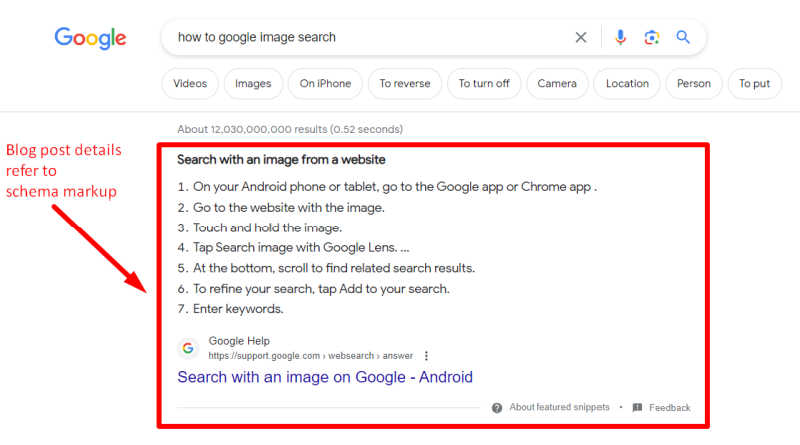
Blog post details refer to schema markup.
Rich snippets are the enhanced search results that are generated based on the schema markup, e.g.:
- FAQs,
- Breadcrumbs,
- Reviews.

Rich snippets as reviews.
Structured data SEO – All Types of Schema Markup and Rich Snippets
If you visit the Developers Google guide about structured data, you’ll see 35 schema markup SEO types and rich snippets that Google supports. You can also find the relevant category by using filters.
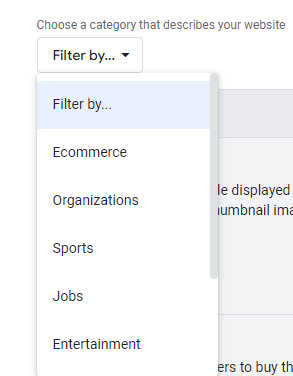
Choosing types of structured data SEO.
We can stand out many structured data markup for a.o.:
- E-commerce – book actions, product, review snippet;
- Organizations – home activity, local business;
- Sports – article, video;
- Jobs – employer aggregate rating, estimated salary, job posting;
- Entertainment – book actions, events, movies, review snippets;
- News – article, fast check, speakable, subscription and paywalled content, video;
- Food and drink – carousel, recipe, review snippet, video;
- Education and science – book actions, carousel, course info, course list, dataset, education Q&A, home activity, learning video, math solver, practice problem, video.
You may implement structured data for any business (the final choice depends on your content distribution strategy). The crucial thing is to wisely select the type of structured data markup that fits your web page.
What are the Most Popular Structured Data Types? [TOP 7]
Structured data markups are essential, especially for e-commerce owners, news websites, and the entertainment sector. However, what schema markup types should you use in most cases?
- Article markup,
- Organization markup,
- Product markup,
- Review markup,
- Local business markup,
- Course markup,
- Event markup
How do the most popular schema markups look, and when should you use them?
Article markup
This type of structured data is essential for content creators and news websites. It enhances the presentation of article pages in search results. By implementing article markup, you provide search engines with detailed information about the article’s title, author, publish date, and description. This is crucial for increasing articles’ visibility and click-through rates (CTRs) in search results.
Official Google’s statement about article schema markup.

Article markup example.
Organization markup
Organizational markup is vital for businesses and institutions seeking to establish their brand’s online identity. It allows you to specify information like your organization’s official name, logo, contact information, and social media profiles. This structured data type is particularly useful in enhancing brand presence in search results and providing users quick access to essential business details.
Official Google’s statement about organization schema markup.
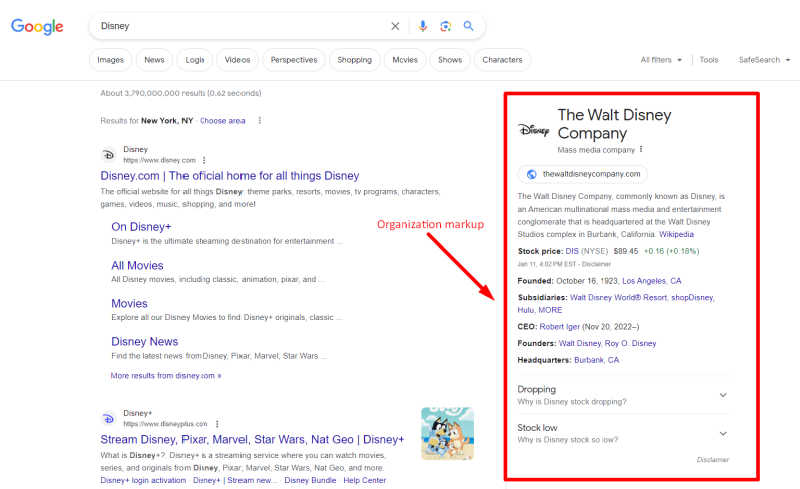
Organization markup example.
Product markup
E-commerce websites and retailers benefit significantly from Product markup. It enables displaying detailed product information in search results, including price, availability, and ratings. This structured data type is critical to attracting potential customers by providing essential product details directly in the search results, leading to improved click-through and conversion rates.
Official Google’s statement about product schema markup.
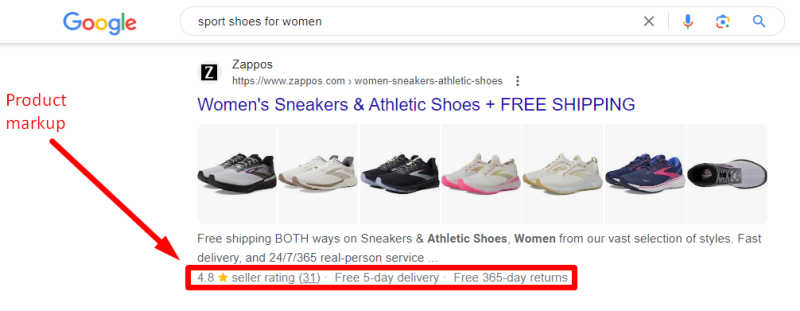
Product markup example.
Review markup
Review markup is crucial for websites featuring customer reviews and ratings. It helps display star ratings and review excerpts in search results, lending credibility and trust to products, services, or businesses. This markup is particularly effective in decision-making for users researching products or services.
Official Google’s statement about review schema markup.

Review markup example.
Local business markup
For local businesses, this markup allows you to provide search engines with specific details about your local business, such as address, phone number, opening hours, and even menus for restaurants. Implementing Local Business markup can significantly enhance local search visibility and attract more customers by making this information readily available in search results.
Official Google’s statement about local business schema markup.
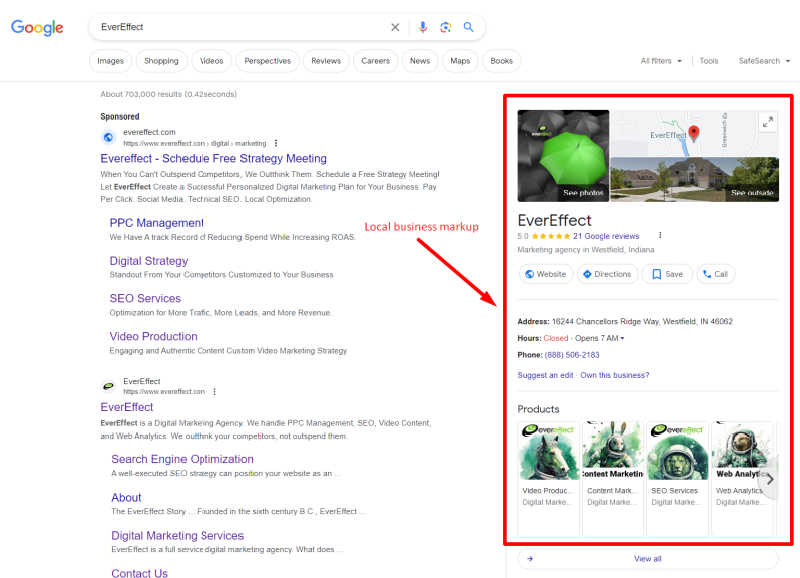
Local business markup example.
Course markup
Educational institutions and online course providers can benefit from Course markup. This structured data helps list courses offered, including details like the course name, description, provider, and duration. This is particularly useful for educational content providers aiming to improve the visibility and accessibility of their courses in search results.
Official Google’s statement about course schema markup.

Course markup example.
Event markup
Event markup is ideal for promoters and venues hosting events. It allows you to display essential event information like dates, locations, and ticket availability in search results. Implementing this markup can significantly enhance the visibility of events and increase attendance by making event details easily accessible in search results.
Official Google’s statement about event schema markup.
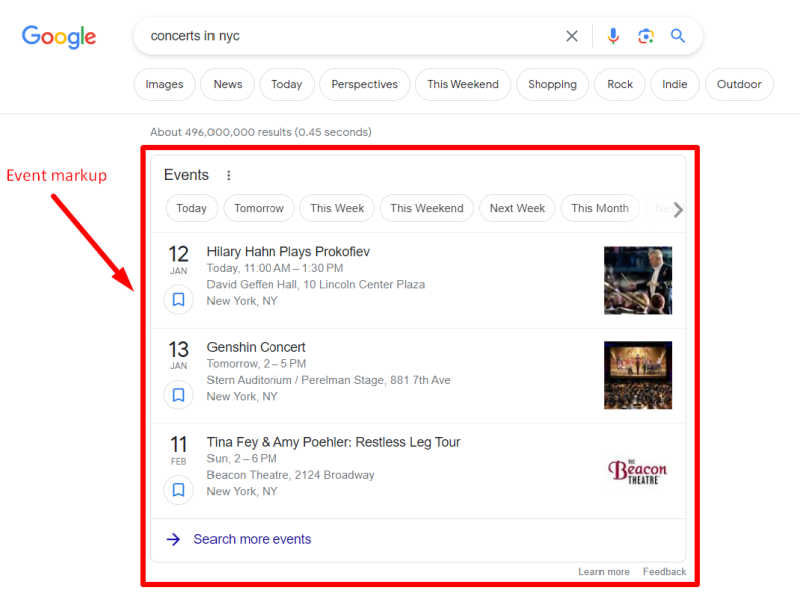
Event markup example.
How to implement structured data markup? – 5 simple steps!
To add structured data, you can use Schema Markup Generator created by Technical SEO.
Here are the 5 straightforward steps to structured data implementation:
- STEP 1: Go to Schema Markup Generator (e.g., from Technical SEO),
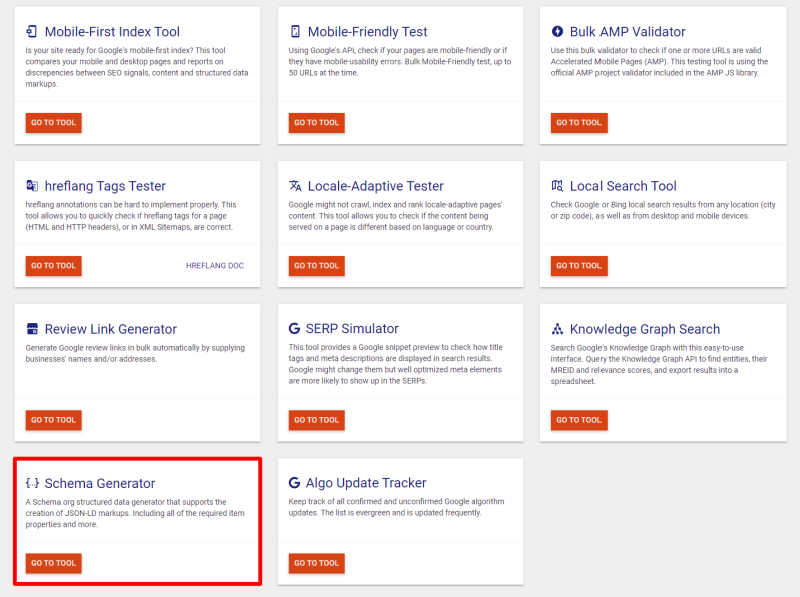
Schema markup Generator from Technical SEO.
- STEP 2: Choose “Schema Generator”,
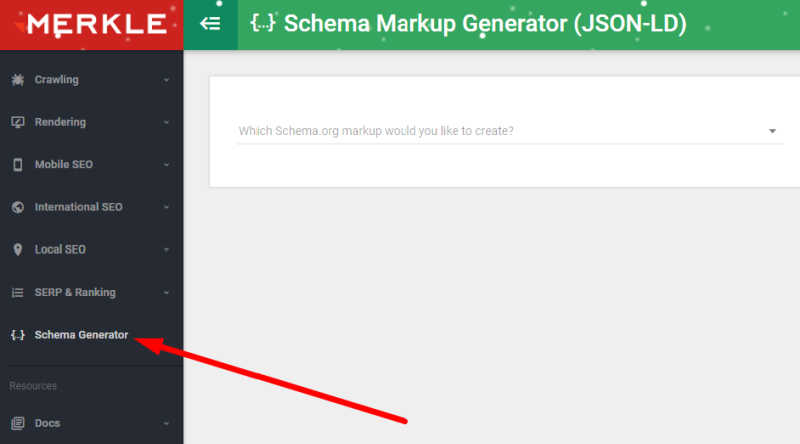
Schema Generator section.
- STEP 3: Click on the correct kind of schema markup,
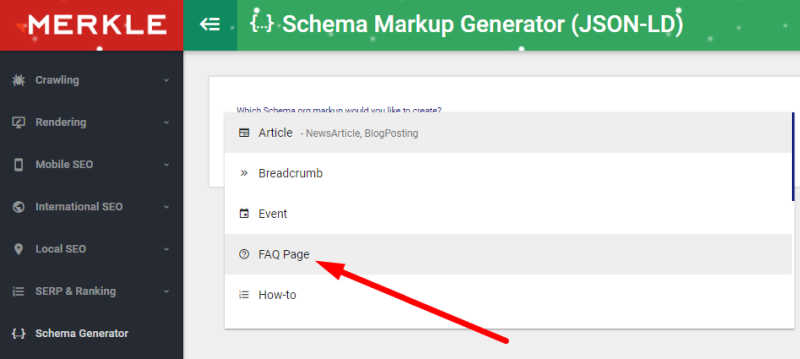
Schema FAQ.
- STEP 4: Fill out structure data with quality content,
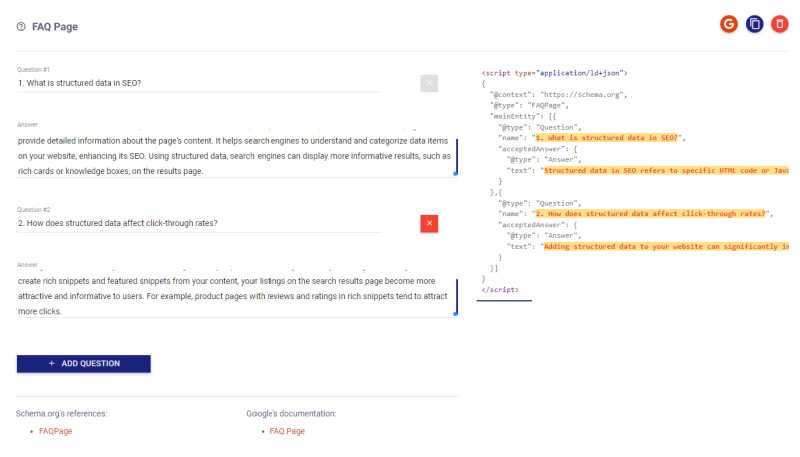
Completed content in the schema generator.
- STEP 5: Go to your CMS (it might be WordPress), pick your blog post, add the HTML section, and copy the code from Schema Markup Generator, and paste it to the HTML section.
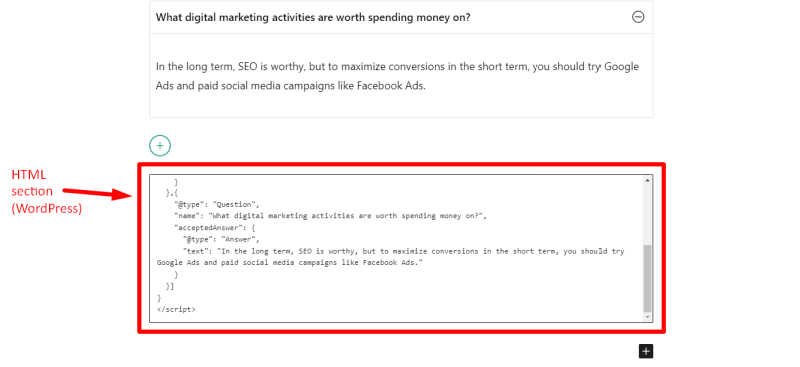
HTML section in WordPress.
Which Structured Data Testing Tool do we Recommend?
We recommend the Schema Markup Testing Tool from Google Search Central.
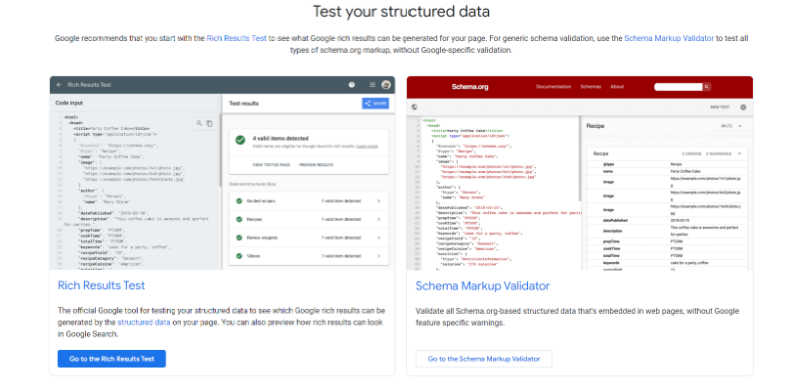
Google’s Schema Markup Testing Tool.
By using this tool, you can test rich results and schema.
After you click “Go to the Schema Markup Validator,” enter a URL or paste your code (snippet), and put RUN TEST.
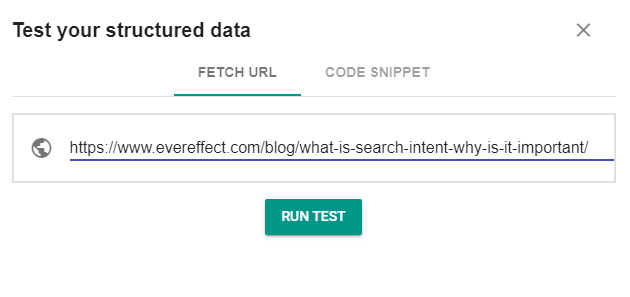
Structure data testing.
After a few seconds of loading, you’ll see the code and the detected issues.
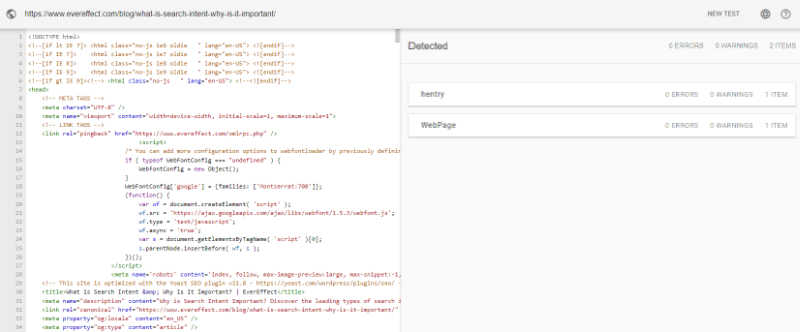
Testing structure data based on the EverEffect blog article.
Structured Data SEO – 4 Key Advantages for Your Business
Structured data implementation is more important than you might think. Schema markup positively influences your website’s visibility, user experience, and CTR. Here are some crucial advantages:
- Improved Visibility of Your Website in Search Engine Results Pages (SERPs) – By implementing structured data, search engines can better understand and index your website content. This clarity helps accurately present your site in SERPs, potentially improving its position and visibility.
- Enhanced Rich Snippets – Structured data allows search engines to display rich snippets directly in the search results, such as star ratings, product prices, or event dates. These snippets make your listings more appealing and informative, standing out in the crowded search results.
- Leveraged User Experience (UX) – Using structured data contributes to a more organized and understandable layout of information on your website. This organization aids users in finding the information they need quickly and efficiently, enhancing the overall user experience on your site.
- Increased Click-Through Rate (CTR) – The combination of improved visibility, enhanced rich snippets, and a better user experience often leads to a higher click-through rate. Users who find your listings more relevant and informative are likelier to click on them, driving more traffic to your website.
What’s more, properly implementing structured data SEO can help your website meet the E-E-A-T standards that improve visibility in Google and other search engines like Bing, Yahoo!, or DuckDuckGo.
How to Utilize Structured Data for SEO?
To effectively utilize structured data for SEO, it’s crucial to understand how structured data works in tandem with your web pages. Primarily, it involves adding schema markup, a type of JSON-LD (JavaScript Object Notation for Linked Data), directly into the HTML file of your page. This structured format helps search engines understand the page’s content more deeply than traditional unstructured data.
When creating HTML with structured data, consider it as turning your content into a relational database, where each element of the page’s content has a corresponding markup. For instance, structured data on all your product pages can define product names, prices, and reviews, contributing to rich search results. This is especially significant for mobile pages, where concise and clear information prevails.
While structured data isn’t a direct ranking signal, it facilitates the creation of rich snippets and rich results, particularly for branded searches. These enhanced results, displayed in Google’s Knowledge Graph, can significantly improve click-through rates and visibility. It’s also important to note that Google prefers, and often recommends, JSON-LD as part of the open community HTML specification for structured data. By strategically implementing structured data, you can transform how your content is understood and presented in search results, offering a more engaging user experience.
Summary
Getting more organic traffic from Google isn’t always about higher positions. It’s crucial to obtain a minimum TOP 10; however, if you rank on the first page, you should try to enhance the visibility of your web page before you put money and a lot of time into increasing your ranking.
It would be best to maximize your CTR by implementing structured data.
We especially recommend that way for e-commerce owners who want to highlight their brands with positive reviews and unique selling propositions (USPs), such as fast delivery (1-3 days), free returns (up to 45 days), etc.
Start making impressions. Scale your business with digital marketing and video production – get new customers within 3-6 months of implementing a relevant SEO/SEM strategy. We can help you with local and global promotion. Call us at 888-506-2183 and get your free proposal!
Structured data SEO – FAQs
What are the most common questions and answers about structured data SEO?
1. What is structured data in SEO?
Structured data in SEO refers to specific HTML code or JavaScript Object Notation (JSON) added to a web page to provide detailed information about the page’s content. It helps search engines to understand and categorize data items on your website, enhancing its SEO. Using structured data, search engines can display more informative results, such as rich cards or knowledge boxes, on the results page.
2. How does structured data affect click-through rates?
Adding structured data to your website can significantly improve click-through rates. By enabling search engines to create rich snippets and featured snippets from your content, your listings on the search results page become more attractive and informative to users. For example, product pages with reviews and ratings in rich snippets tend to attract more clicks.
3. Is structured data necessary for all pages or just certain types?
While structured data across the entire site is beneficial, it’s crucial for certain pages like product pages, local businesses, and articles. For these pages, structured data can lead to rich results like the knowledge panel or local business listings, which are highly visible and engaging on search results pages.
4. Can structured data be added to AMP pages?
Structured data should be added to AMP (Accelerated Mobile Pages). This helps provide a consistent and enriched user experience across standard and AMP pages. The process involves embedding a JSON-LD code snippet in the AMP page’s HTML code. However, it would be best to remember that Google had retired AMP for ranking systems.
5. What is the step-by-step process to implement structured data?
The step-by-step process to implement structured data involves selecting the proper schema markup for your content, creating the HTML code or JavaScript notation for the structured data, and embedding it on your web pages. Tools like Google’s Structured Data Markup Helper can assist in generating the code snippet. After implementation, use structured data testing tools to validate and add missing tags.
6. What are the supported formats for structured data?
The primary supported formats for structured data are Microdata, RDFa, and JSON-LD, with JSON-LD being the preferred format by Google. JSON-LD is a JavaScript notation embedded in a script tag in the page’s HTML code. Each format has its use cases and benefits, but JSON-LD is widely recommended for its ease of use and effectiveness.
7. How do you use structured data to enhance local SEO for businesses?
For local businesses, structured data can be pivotal in appearing in local search results and knowledge panels. Embedding structured data related to business information, like address, phone number, and opening hours, directly into the website’s HTML helps search engines display this information in rich snippets and local search results. This improves visibility and aids in better click-through rates from the results page.

